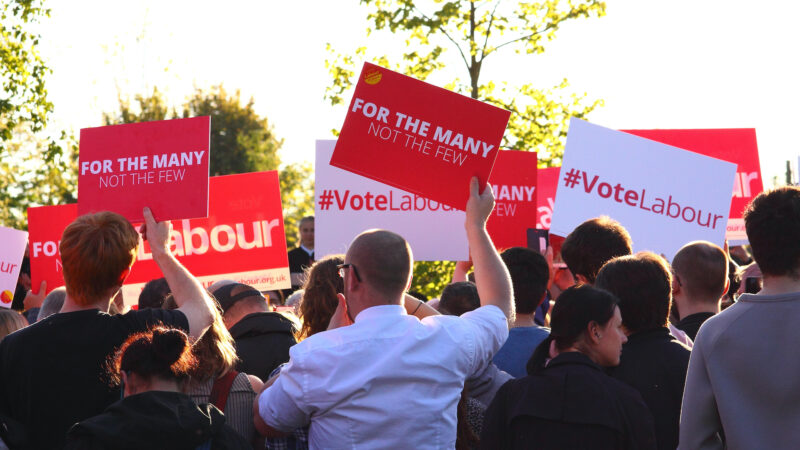
Were it not for Covid-19, Keir Starmer would have faced voters a little over a month after becoming Labour leader. When the leadership contest began in January, May 7th was pencilled into the diaries of candidates as the day of elections for police and crime commissioners across England and Wales, 118 English local authorities, the London Assembly, and directly-elected mayors.
It would have been the new leader’s first big test with the public. And on becoming Labour leader, the inheritance from his predecessor would have left Starmer a mountain to climb with no time in which to reach the summit. It would have provided Boris Johnson with a much more favourable run at the first poll of voters in the post-Brexit parliament.
The postponement of the 2020 local elections has afforded Starmer a year in which to begin the process of detoxifying the ‘Labour brand’ and winning back the trust of lost swing voters. The luxury of time ups the ante for Labour, however, as political parties across the UK will now face an unprecedented series of elections just over a year into the new parliament. Labour will need to show progress if Starmer is to demonstrate a credible pathway to government under his leadership.
One year out, this is the start of a short series for LabourList on Starmer’s first major test with the electorate (barring any unforeseen parliamentary by-elections). I will identify the key battlegrounds, examine what past elections held one year into a new parliament show us, and what Labour needs to do in order to show progress with the electorate. It starts here, with an overview of the political battlegrounds where elections will take place.
Given the catalogue of failings on the part of the Johnson government during the Covid-19 crisis, the political reality is that the first phase of opposition in this parliament should focus on turning these elections into the equivalent of US midterms for the Prime Minister. For Labour, this comes at a risk. But to win again, Labour must be bold. The elections in May 2021 are a big deal, across all nations, both in the number and the nature of the votes being held.
Wales
Voters in Wales will elect the Welsh parliament. It will be the first time that 16- and 17 year-olds will vote to elect the Welsh government. 60 seats are up for grabs in a chamber that has consistently seen Labour return the highest number of members at every election since devolution in 1999.
However, a YouGov poll in April reported a lead for the Tories that, if repeated on election day, would secure a majority of seats for the Conservatives for the first time in Wales, overtaking Labour. While the Labour Party retained 22 parliamentary seats in Wales at the general election in December, the Tories made six gains – all at Labour’s expense.
Scotland
Voters in Scotland will elect 129 members of the Scottish parliament, five years after the Conservatives overtook Labour to take second place in Holyrood. With the gains of 2017 wiped out in last year’s general election, Labour finds itself once again with a single MP in Scotland.
After ten years in opposition at UK level, however it is explained, Labour has had no credible political strategy for reversing its woes in Scotland. That cannot continue if Labour is to be a party of government once again, with modelling showing that Labour must occupy at least 15 seats in Scotland if it is to hold a majority in the UK parliament. This is not the test next year, but Labour needs to change in the eyes of voters in Scotland – just as it does in Wales and England, if it is to have a chance of being in power again.
England
In England, there are local authority elections at district, metropolitan and county level. Police and crime commissioners are up for election – as they are in Wales as well. Voters will also go to the polls for the London Assembly. But there are three parts of the picture in England that are going to become the political focus.
First, Sadiq Khan should comfortably return as mayor of London. Second, there are two particularly promising ‘metro mayor’ battlegrounds for Labour: Tees Valley and the West Midlands. Both are currently held by Tory incumbents, but both should be high in Labour’s sights – not least in the West Midlands, where the party was defeated by a margin of just 1% in 2017.
Third, the ‘national equivalent’ share of the vote. Local elections provide performance measures in the form of votes, seats and councils won. But as local elections are not held everywhere, these numbers are a simplistic interpretation of the nation’s political mood.
Academic experts Michael Thrasher and Colin Rallings model the votes cast at ward level – an uneven picture, with some wards having elections and some not. They use this to project the outcome for a general election, in which every voter in every ward would have cast a ballot. This figure, which will be published the day after polling day, will inform an important part of the narrative framework heading into the second phase of this parliament. For the leader of the opposition, it will inform the answer to the question: ‘Is this person a winner?’




More from LabourList
‘Forget New Year – for Labour, discipline done well has to be their year-long resolution’
EXCLUSIVE: New Year Message from Anna Turley
Which Labour ministers did the most broadcast interviews in 2025?